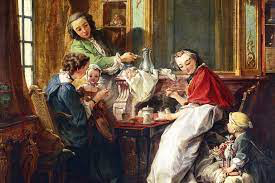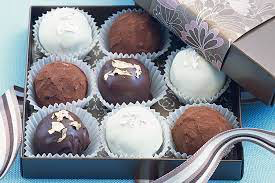The History of Chocolate in under 500 words
- Neil Hitchcock
- Oct 4, 2023
- 2 min read
In the heart of ancient Mesoamerica, cacao trees thrived under the watchful gaze of the Mayan civilization. It was an age when the gods were believed to have bestowed upon humanity the gift of chocolate, a bitter elixir brewed from the crushed beans of the cacao pods. The Mayans, with their advanced agricultural practices, cultivated these precious trees, and chocolate became an integral part of their culture, reserved for royalty and sacred rituals.

Centuries later, the Aztecs embraced this bitter beverage, naming it "xocolātl," a word that would echo through time. In Aztec society, chocolate was not just a drink; it was a form of currency, a symbol of power, and a source of divine energy. Montezuma II, the great Aztec emperor, was said to consume vast quantities of xocolātl daily, believing it enhanced his stamina and vitality.
The arrival of Spanish explorers in the 16th century changed the course of chocolate's history. Hernán Cortés, the famed conquistador, was introduced to the delights of xocolātl during his expedition to the New World. Intrigued by its unique taste, he brought the mysterious beans back to Spain, where innovative minds began experimenting with ways to sweeten the bitter elixir. Sugar and various spices were added, transforming the once-potent concoction into a more palatable drink.

By the 17th century, chocolate had spread across Europe, becoming a fashionable indulgence among the elite. Chocolate houses emerged, becoming hubs of intellectual exchange and lively discussions. It was not long before chocolate met the heat of the Industrial Revolution. In the 19th century, advancements in technology, including the invention of the cocoa press, allowed for the mass production of chocolate bars, making this delectable treat accessible to people from all walks of life.
As the 20th century dawned, chocolate underwent further transformation. Ingenious chocolatiers experimented with various ingredients, giving birth to an array of tempting confections: truffles, pralines, and chocolate-covered delights. World War II played a pivotal role in shaping chocolate's destiny. The U.S. military commissioned chocolate companies to produce specially designed bars for soldiers, providing them with a taste of comfort amid the chaos of war. This led to the popularisation of chocolate as a quick, portable snack.

In the latter half of the 20th century and into the 21st, the world witnessed a chocolate renaissance. Artisanal chocolatiers emerged, emphasising quality over quantity, crafting exquisite chocolates that tantalised the taste buds and elevated the status of this beloved treat. Additionally, the scientific community began uncovering the potential health benefits of chocolate, particularly dark chocolate, which is rich in antioxidants and believed to have cardiovascular advantages when consumed in moderation.
And so, the history of chocolate unfolded, weaving a rich tapestry of cultural exchange, innovation, and indulgence. From the ancient rituals of the Mayans and the opulent courts of the Aztecs to the bustling chocolate factories of the modern era, chocolate had journeyed through time, capturing the hearts of people around the globe. Today, as we savour the smooth, velvety texture of a piece of chocolate, we are not just tasting a treat; we are savouring centuries of history and the sweet legacy of an ancient civilisation's divine gift to the world.

























Yorumlar